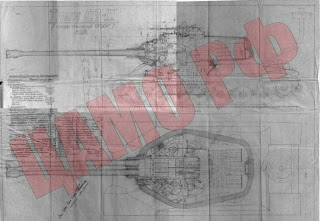Welcome to another edition of my Q&A! The previous one can be found here.
Q: Could you present a case for adding the Object 279 as a tier 10 heavy tank?
A: Well, the ridiculous armour angle would rival American heavy tanks for hull-down headaches. UFP and up, it’s a possible addition to the game. The only problems come when looking downward. The quadruple tracks would be a problem. On the T95, they are treated as only two tracks, but on this tank, they are much more further apart. Even if the developers do the same thing as the T95, there is still the issue of the fuel tanks in the middle of them. All of that UFP and front turret armour won’t do much when your tank burns from every shot to the relatively unprotected gas tanks. Even if you figure out how the 279 fits within game mechanics, the only way we’d ever see one at tier 10, is if we get a severely gimped version, like with the IS-7. Since SerB admitted the IS-7 to be his biggest mistake, I doubt we will see the Object 279.
Q: Could you write more about the T-32? I remember reading that some of them fought in the late stages of the Spanish Civil War, and that the design was unsuccessful because it was still a convertible tank.
A: The T-32 (or A-32, as it is more often called) was a further evolution of Koshkin’s ATG resistant tank projects. The government order was for a tank that is protected from guns with its speed, which built on the BT-7M. The result of that was the A-20. On his own initiative, Koshkin developed another tank, without a convertible drive, but with a more powerful gun, and more armour. His second prototype was weighed down to 24 tons (original mass was 19 tons) to test the reliability of its components. The tests were successful, and the development of a tank with a high velocity 76.2 mm gun and 45 mm of highly sloped front armour began. The result of that was the A-34, the precursor to the legendary T-34.
As for the A-32 seeing combat in the Spanish Civil War, that is very unlikely. Only two were built, in the spring and summer of 1939. By the spring of 1939, the situation of the Republicans was so grave, that it is highly unlikely that the Soviets would send them an untested prototype of a brand new tank.
Q: What was the BT-IS? Did the IS stand for Iosif Stalin?
A: Yes, the IS stood for Iosif Stalin, but the BT-IS tanks predate the heavy tank with a similar name by nearly a decade. The first BT-IS was the BT-2-IS, a 1934 project to improve the very flawed BT-2 tank. The prototype made all 6 wheels propel the tank in wheeled mode, instead of just two, and had a slightly redesigned hull with additional gas tanks. The tank was more agile and more survivable under fire than the BT-2, but the lack of synchronization between the road wheels and lower reliability led the project to be abandoned.
A similar project was undertaken with the BT-5-IS, in 1936. The tank also had higher off-road performance than the BT-5, and additional gas tanks. A brand new feature was the ability to convert the tank from track mode to wheeled mode without leaving the tank, in just 15 minutes. Unlike the singular BT-2-IS, 10 were built.
The BT-5-IS model 1938 project improved the BT-5-IS further. The armour was thickened and sloped at the expense of some gas tanks. No BT-IS was mass produced, but improvements from the projects were used in the BT-7 and BT-7M projects.
Q: Is it true that the V-2 engine was designed as an aircraft engine? Can you write on its history? Does it have disadvantages?
A: The engine was built as a multi-purpose diesel engine by the Kharkov Locomotive Factory (originally intended for heavy bombers, but insufficiently powerful for them). Five modifications existed by the start of the war: V-2 (BT-7M), V-2-34 (T-34), V-2K (KV-1 and KV-2), V-2V (Voroshilovets tractor), and an experimental “half” (V-4) modification for the T-50 tank. In later years, the engine was forced to higher horsepowers, such as the V-2SF and V-2SN using a centrifugal supercharger (borrowed from an aircraft engine). V-2 type engines continued to be developed for Soviet heavy tanks throughout the war. Descendants of the V-2 engine are still produced today (with not that many changes), for tractors, boats, trams, hovercrafts, locomotives, heavy trucks, and a large number of other vehicles.
Disadvantages of the engine design compared to modern alternatives include a high use of oil, loud noise, and complicated components that could be designed better today, with the use of superior manufacturing technologies. The aircraft roots of the engine also used aluminium, which was in short supply during the war, and sometimes replaced with other alloys.
Q: During the siege of Leningrad, the Kirov and Bolshevik plants produced tanks despite a lack of resources. Can you write something about these improvised constructions?
A: I have read of T-34s and KV-1s built with gasoline engines from older model tanks that were still in storage, when shipments of V-2 engines were interrupted. There were also plans to make T-34s with 45 mm guns, in the event of a shortage of 76 mm guns, but none were produced. Experimental tanks, such as the T-50 and KV-220, also took part in the siege.

 A: Nope. It’s an M-62 with most of the gun past the bore evacuator cut off. The D-10 had no such device near the muzzle.
A: Nope. It’s an M-62 with most of the gun past the bore evacuator cut off. The D-10 had no such device near the muzzle.






